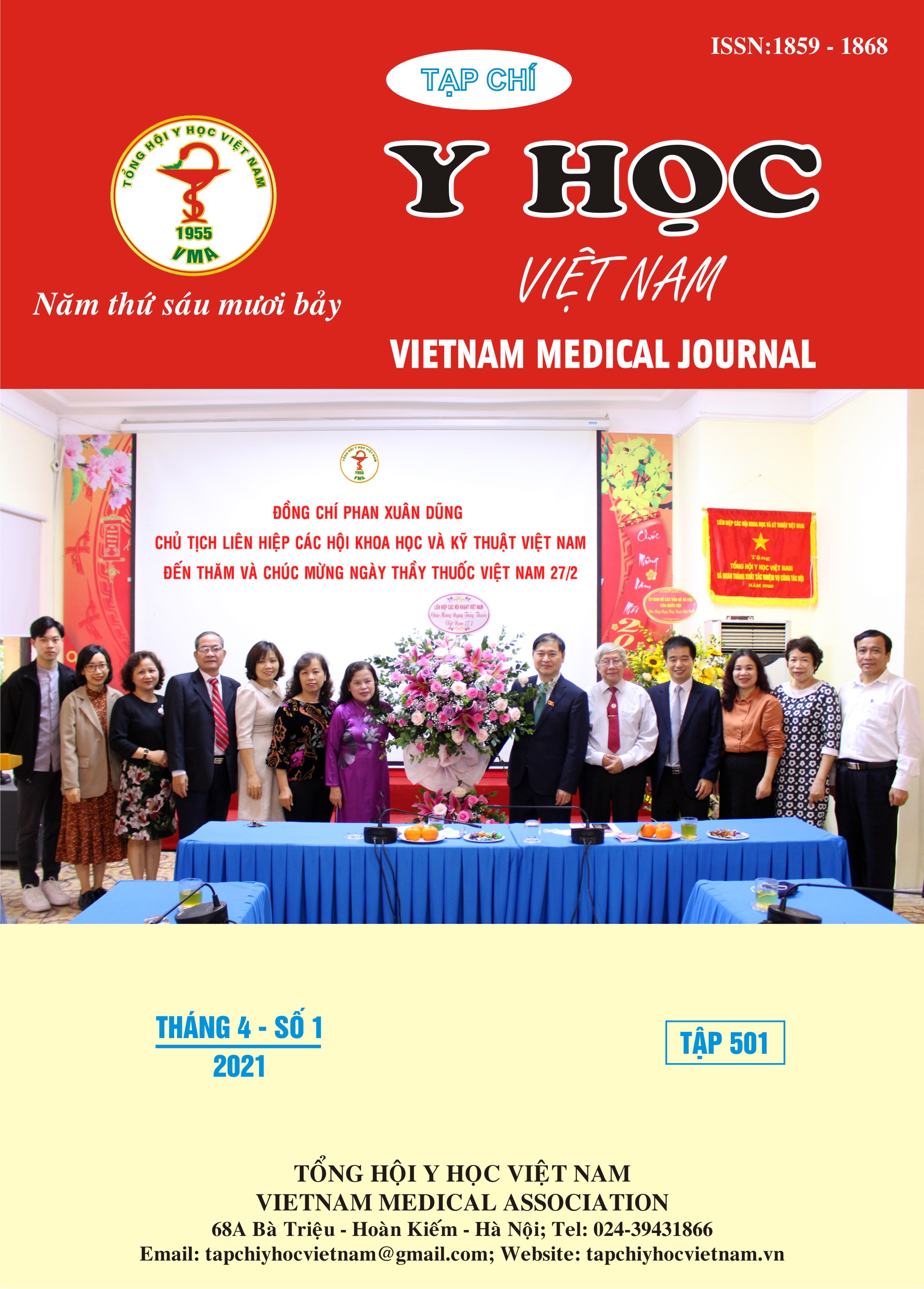ASSESSMENT OF THE EFFICIENCY OF SUBLINGUAL MISOPROSTOL 400 MCG REGIMEN IN THE TREATMENT OF INCOMPLETE ABORTION UNDER 12 WEEKS GESTATION AT NHAN DAN GIA ĐINH HOSPITAL
Main Article Content
Abstract
Background: Complications following spontaneous or induced abortion are a major cause of maternal morbidity. Misoprostol has been shown to be an effective alternative to surgical evacuation in incomplete abortion and can be offered by lower level clinicians. Objective: To identify the success rate of sublingual Misoprostol 400 mcg regimen in the treatment of incomplete abortion under 12 weeks gestation at Nhan dan Gia Đinh Hospital. Methods: The study reported on 177 case of incomplete abortion (under 12 weeks), conducted between June 2020 and January 2021 at Nhan dan Gia Đinh Hospital. Results: The rate of success rate of sublingual Misoprostol 400 mcg regimen in the treatment of incomplete abortion under 12 weeks gestation accounts for 90.96% (95% CI: 90.40-91.52). The bleeding time less than 14 days is more likely to be successful than bleeding time lasting more than 14 days with OR 52.63 95% (CI 9.09 – 333.33). The mean bleeding time is 9.5 ± 4.6 days, with low bleeding 35%, medium 49.2% and more 15.8%. The degree of abdominal pain is no pain 13.6%, less pain 40.7%, moderate pain 37.3% and a lot of pain 7.9%, with the rate of pain reliever 65.5%.. The most common adverse effects are nausea 28.8%, vomiting 5.1%, diarrhea 18.1%, chills 6.8%, allergies 1.1%. Conclusions: The rate of success rate of sublingual Misoprostol 400 mcg regimen accounts for 90.96%. Misoprostol is an effective, safe, and acceptable method for treating incomplete abortion.
Article Details
Keywords
Incomplete abortion, Misoprostol, Miscarriage
References
2. Bộ Y Tế (2015), "Sẩy thai không trọn", Hướng dẫn chẩn đoán và điều trị các bệnh sản phụ khoa, tr. 10.
3. Nguyễn Thị Như Ngọc (2013), "Results from a study using Misoprostol for management of incomplete abortion in Vietnamese hospitals: implications for task shifting", BMC pregnancy and childbirth, tr. 118-118.
4. Abbasi S (2008), "Role of clinical and ultrasound findings in the diagnosis of retained products of conception", Ultrasound in Obstetrics & Gynecology, 32(5), pp. 704-707.
5. ACOG (2009), "Misoprostol for Postabortion Care", Committee on International Affairs, pp. 427.
6. Honkanen H (2004), "WHO multinational study of three Misoprostol regimens after mifepristone for early medical abortion", BJOG, 111(7), pp. 715-725.
7. Coughlin L. B (2004), "Medical management of first trimester incomplete miscarriage using Misoprostol", J Obstet Gynaecol 24(1), pp. 67-68.
8. Fawole, Adeniran O (2012), "Misoprostol as first-line treatment for incomplete abortion at a secondary-level health facility in Nigeria", International Journal of Gynecology & Obstetrics, 119(2), pp. 170-173.


